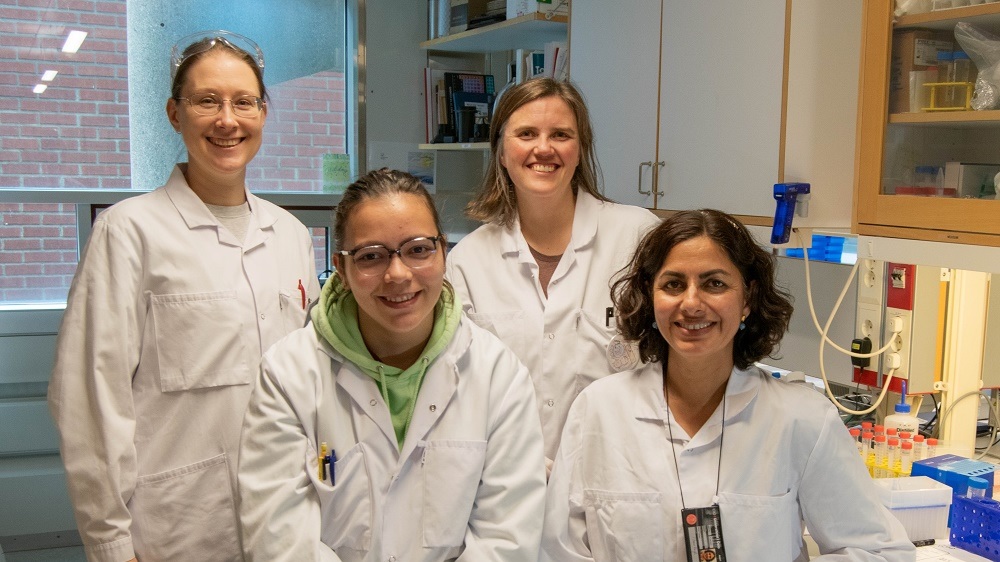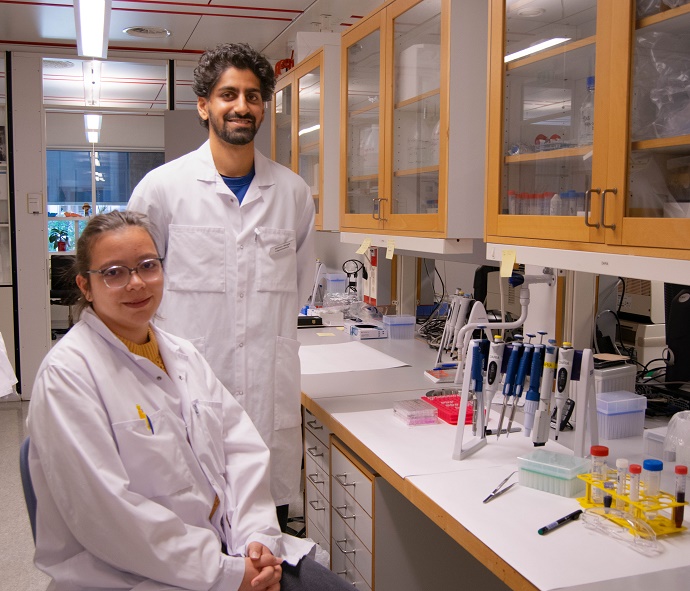Burning Mouth Syndrome (BMS) is a chronic condition characterized by a burning pain in the mouth, sometimes accompanied by numbness. The clinical features of this condition closely resemble other neuropathic pain disorders. There has been limited research on this phenomenon in Norway, but a research project at the Faculty of Dentistry may contribute to the establishment of a new treatment method.

Left to right: Daria Zaytseva-Zotova, Léa Lecomte, Hanna Tiainen, and Bano Singh. Photo: Private
BMS is often considered a perplexing condition because the intensity of pain rarely corresponds to the clinical signs of the disease.
"Pain lasting at least 4-6 months with an intense burning sensation in the mouth, that cannot be explained by a medical or dental condition, is what leads to the diagnosis of BMS," explains Associate Professor Preet Bano Singh.
"Since there has been so little research on BMS, patients often feel dismissed, with their complaints being trivialized," Singh continues. "However, by scanning the brains of patients with BMS, we detected pathology in the pain matrix in the brain. This international, interdisciplinary collaboration was published in the European Journal of Neuroscience, indicating that patients with BMS have cerebral neuropathy in the pain area, which could be a cause of the burning sensation in the mouth."
Bano Singh works at the Clinic for Smell, Taste, and Oral Pain, where many patients with chronic burning mouth pain are referred.
"Before confirming that a person suffers from Burning Mouth Syndrome (BMS), it is important to investigate and exclude other possible causes of the burning pain," Singh continues.
Medical and dental interventions, as well as the use of certain medications, can lead to burning mouth pain. This involves evaluating whether the pain may originate from issues affecting the entire body (systemic causes) or from conditions affecting the areas around the mouth (peripheral causes).

Currently, there are no effective treatment regimens for this patient group in Norway. Various medications are used to treat BMS, including benzodiazepines, gabapentin, tricyclic antidepressants, antipsychotics, antioxidants, and behavioral therapies.
"However, none of these treatments are optimal or particularly effective, and patients experience despair when there are no options to treat or alleviate their chronic pain," Singh points out.
One remedy that has some effect is alpha-lipoic acid, an antioxidant. According to Singh's observations, approximately 60 percent of her patients respond positively to this treatment. For the remaining 40 percent, it has little or no effect.
"However, BMS can also be effectively treated with capsaicin gel, which is commonly used in other countries," Singh says.
But it is not possible to purchase intraoral capsaicin gel or ointment in Norway.
"Therefore, I decided to explore ways to create a substance that can effectively deliver the correct concentration of capsaicin to oral mucosa," says Singh. To achieve this, she contacted Associate Professor Hanna Tiainen. Tiainen's expertise lies in biomaterials, chemistry, and materials science, and she conducts research at the Clinical Research Laboratory, Faculty of Dentistry, UiO. A laboratory dedicated to research in clinical dentistry and medicine.
Together with Hanna Tiainen, medical student Simon Singh, materials science masters student Léa Lecomte, and dental students Nadin Elkafas and Frozan Haideri, they embarked on laboratory experiments related to the substance capsaicin. The students were trained and supervised in the laboratory experiments by Daria Zaytseva-Zotova and Alejandro Barrantes Bautista.
"Capsaicin is a chemical compound naturally found in chili peppers. It acts as an 'awakener' for specific receptors in the body that transmit pain and temperature signals. These receptors are called 'TRPV1 receptors,' Singh explains.
The challenge is how to keep the active substance where it should be. When capsaicin is applied to the mouth, it is often washed away by saliva and quickly disappears when the tongue moves. Therefore, researchers are working on finding a way to prolong the presence of capsaicin in the mouth.
"In this research project, the idea is to develop a kind of 'carrier' that can keep capsaicin in place in the mouth," Tiainen explains.
This carrier must have sufficient stickiness to adhere to the mucous membrane.
"The goal is to develop a new method for delivering capsaicin to the mouth that provides longer duration and better effectiveness. However, before such a treatment strategy can be implemented, it must be investigated whether the new carrier is safe for the cells in the mouth," the researchers conclude.
So far, this collaboration has resulted in an abstract:
Zaytseva-Zotova, Daria; Singh, Simon; Haideri, Frozan; Elkafas, Nadin Abdelwahab Mohamed Abdou; Barrantes Bautista, Alejandro; Singh, Preet Bano & Tiainen, Hanna (2023). Capsaicin-Loaded Microdroplets for the Treatment of Burning Mouth Syndrome.






